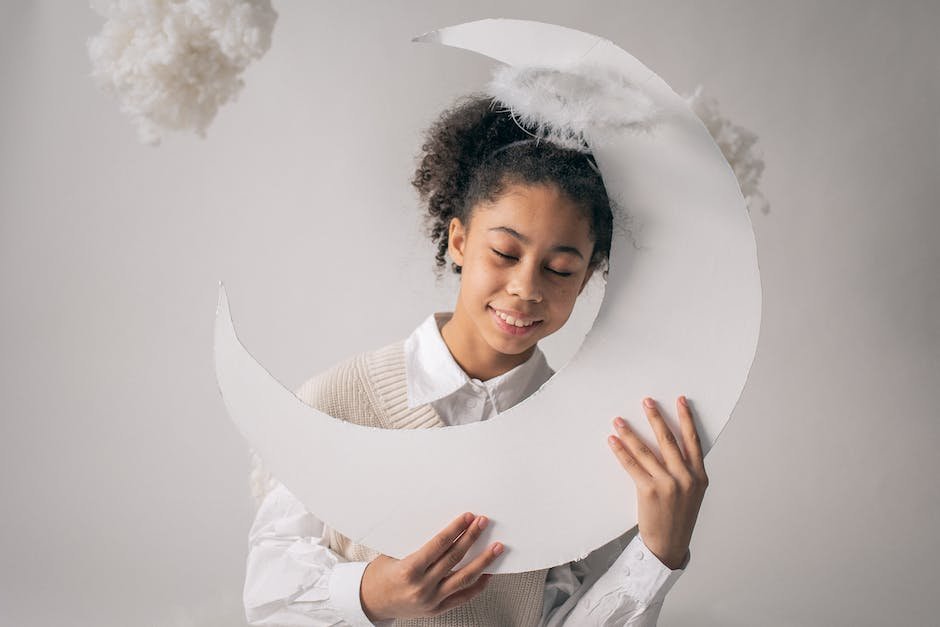
Sleep lays the foundation for a child’s growth and development, yet for families navigating the complexities of autism and ADHD, bedtime often presents an array of challenges. These neurodevelopmental conditions come with unique hurdles, influencing not only daytime functioning but also the hushed whispers of the night when the world is expected to rest. Through an in-depth exploration of the intersection between autism, ADHD, and sleep, we venture into understanding the intricate sleep challenges specific to these groups. From the whispers of anxiety to the clamor of sensory sensitivities, this essay shines a light on the shadows that can disrupt a peaceful night’s slumber. It is a journey through the night—one that seeks to arm parents with knowledge and strategies to guide their children into the serene embrace of restful sleep.
Understanding the Sleep Challenges in Autism and ADHD
Unraveling the Mystery: Why Sleep Can Be a Winding Road for Kids with Autism and ADHD
Have you ever spent hours trying to lull a child into slumber, only to find them wide-eyed and bushy-tailed, as if they’ve had a secret nap you knew nothing about? For parents with children on the autism spectrum or those who are managing ADHD, bedtime can sometimes feel like a Herculean task rather than a peaceful routine. Let’s dive into the whys and wherefores of our little night owls’ sleep challenges.
A Symphony of Factors: Unpicking the Knot
Firstly, it has to be said that sleep can be as complex as each unique child. Kids with autism or ADHD often have differences in their neurological wiring, which affect various aspects of their lives, and sleep is no exception. Our brain has its own nighttime to-do list, from processing the day’s learning to filing away memories and rejuvenating for what’s next. When a child’s brain is wired with autism or ADHD, that list can take a little longer to check off or get shuffled around.
Sensory sensitivities play a leading role in the bedtime riddle. Imagine trying to fall asleep with a label in your pajamas feeling like sandpaper on your skin, or the hum of the heater sounding like a marching band. For children with heightened sensory experiences, these are not mere annoyances but significant obstacles on their journey to dreamland.
Routine and environment hold the keys to the snooze fest kingdom. Consistent bedtime rituals and a soothing sleep environment can be the difference between a starry night and a sleepless saga. However, establishing such routines is often more challenging for children with autism or ADHD due to their need for predictability and resistance to change.
The Sleep Hormone Tango
Another guest at our sleep party is melatonin – the body’s natural sleep aid. Some folks with autism or ADHD might not produce melatonin at the optimum times, throwing off their internal clocks. When melatonin levels are out of sync, catching the sleep train becomes harder as their bodies aren’t receiving the right ‘time for bed’ signals.
The Restless Energy Conundrum
For our tiny dynamos with ADHD, there’s also the whirlwind of boundless energy to contend with. Their motor seems to be always running, which means winding down for sleep can be an uphill task. It’s like asking a hummingbird to take a leisurely stroll – their natural pace is set to a brisk flutter.
Moreover, their creative and inquisitive minds are often buzzing with ideas and thoughts, making it hard for them to turn off the switch and settle into relaxation mode. You know how captivating a good page-turner can be? Well, for many children with ADHD, their brain is producing a bestseller every night.
The Emotional Overlay: Navigating the Night Seas
Finally, the emotional aspect cannot be overlooked. Anxiety can be a frequent companion for children with autism or ADHD, turning their night into an odyssey of worries and what-ifs. For these children, the prospect of being alone in the dark, separated from their trusted adults, can quickly ramp up their anxiety levels, hitting the pause button on their sleep process.
Embracing the Slumber Challenge: Creating a Zzz’s Friendly Zone
Understanding that sleep can be elusive for kiddos with autism and ADHD is the first step to equipping them with the tools they need for better nights. What follows is the patient and loving implementation of routines, strategies, and possibly consulting sleep specialists to tailor the perfect bedtime blueprint for each unique dreamer.
In every nook of the nocturnal adventure, remember, there’s a community out there brimming with solidarity and shared experience. And while sleep might not always come easy for these little trailblazers, with the right support and knowledge, they’ll be able to embrace the land of Nod, one serene slumber at a time.
Sleep tight, dear families. Here’s to catching those elusive Zzz’s, one starry night after another.

Strategies for Improving Sleep in Children with Autism and ADHD
Sweet Dreams: Helping Our Special Kids Drift into Slumberland
Picture this: it’s late at night, and the house is blanketed in a peaceful quiet, except for one room where a little lamp is still glowing. There, a dedicated parent is reading soothing bedtime stories, but the sweet whispers of sleep seem to elude their child. For families with children who have autism or ADHD, this scene is all too familiar, as getting a good night’s rest can be akin to reaching for the stars. But worry not, with a sprinkle of patience and a dash of know-how, parents can become dream weavers for their little ones.
One crucial aspect often overlooked is the influence of dietary habits on sleep. Bearing in mind that children with autism or ADHD may be sensitive to food additives, artificial colors, and sugar, it’s time to play detective with nutrition. Aim for a diet rich in whole foods, and if possible, keep a food diary to track sleep patterns in relation to dietary choices. Remember, some foods like bananas, almonds, and turkey are known as nature’s sleep aids due to their melatonin and magnesium content.
Setting the stage for sleep also means tailoring physical activity to meet the needs of active children. While it’s no secret that exercise is the best friend of sleep, it’s the timing that’s key. Encouraging outdoor play and inclusive sports can channel that boundless energy positively while ensuring it doesn’t encroach on bedtime. Balance is the golden rule: enough activity to tire them out, but not too close to tuck-in time to keep them buzzing.
Harnessing the power of relaxation techniques can transform bedtime into an oasis of calm. Techniques like deep breathing, gentle yoga stretches, or progressive muscle relaxation are not just magic spells for sleep, but life skills that children can carry into adulthood. They help in releasing the knots of the day and clear the path to dreamland.
Communication is another VIP (very important practice) when it comes to sleep. Take the time to chat about the day’s highs and lows. This nightly ritual acts as an emotional release valve, helping to alleviate nighttime worries that might keep a child’s mind racing when it should be slowing down for the night.
Lastly, never underestimate the value of joining forces with other parents. Online forums, local support groups, and even casual park meet-ups can be a goldmine for sharing trials and triumphs. Sometimes, the best solutions come from those on the same journey, so build that network and take comfort in the collective wisdom and camaraderie.
While there is no one-size-fits-all solution, experimentation is the spice of the bedtime routine. Just as each child is wonderfully unique, so too are the paths to their slumber. With a blend of structured approaches and a dash of ingenuity, transformed nights—filled with the silent music of restful sleep—are not just a dream, but a reality within grasp. Now, let’s turn that page, fluff that pillow, and bid farewell to those sleepless nights. Sweet dreams are on the way!

The Impact of Sleep Deprivation on Family Life
When a child doesn’t get enough sleep, the ripple effect can be felt throughout the entire family.
Sleep is as foundational to health and wellbeing as a balanced diet or regular exercise, and the lack thereof can have a profound impact, touching every aspect of family life.
For families with children who have unique sleep challenges, like those with autism or ADHD, the consequences can be even more pronounced.
For starters, a child’s sleep deprivation can lead to behavioral issues during the day.
It’s well known that children who don’t get enough rest can become irritable, hyperactive, and have difficulty concentrating.
This can turn simple daily routines into battles, from getting ready in the morning to completing homework.
Parents may find themselves on the receiving end of temper tantrums and mood swings, which can disrupt the peace and harmony of home life.
Moreover, a child’s lack of sleep doesn’t just impact their mood and behavior, it often affects their overall health as well.
Parents may notice lowered immunity in their sleepy little ones, leading to more frequent colds or bouts of flu, which can in turn translate to missed days at school and work.
This domino effect can cause stress and strain for everyone, as the family juggles healthcare appointments, sick days, and keeping everyone else in the household healthy.
Sibling dynamics can also take a hit when one child is constantly sleep-deprived.
Other children in the family may feel neglected or resentful if a sleep-challenged sibling requires more of their parents’ attention and resources.
Not to mention, if a tired child is quick to anger or tears, siblings may bear the brunt of these emotional outbursts, potentially leading to squabbles and a less-than-serene family environment.
Parental sleep is another critical aspect affected.
After all, parents often can’t sleep until their children do, and they’re typically the ones who get up to soothe or care for their child in the middle of the night.
A child’s disrupted sleep can mean less rest for parents, leading to their own set of issues: increased irritability, decreased patience, and a higher risk of both mental and physical health concerns.
It’s a cycle that can leave parents feeling drained and unable to bring their best selves to their parenting or professional roles.
But it’s not all doom and gloom.
Recognizing the holistic influence of a child’s sleep on family health can be a powerful motivator for seeking solutions and supports.
Families may find it beneficial to consult with sleep specialists or therapists who understand the unique challenges faced by children with neurological differences.
Furthermore, behavioral approaches, such as Cognitive Behavioral Therapy for Insomnia (CBT-I), can provide structured strategies to help children learn to self-soothe and fall asleep more easily.
Additionally, the importance of community cannot be overstated.
Finding solace in shared experiences can offer a sense of belonging and reduce feelings of isolation.
Local support groups, online communities, and social media groups can be invaluable resources where families can exchange stories, tips, and encouragement.
At the end of the day, the goal is to ensure that every family member, child and parent alike, gets the rest they need.
It’s a journey that may require patience, experimentation, and the support of a village, but the positive outcomes for every family member make it a worthwhile venture.
Sleep is not just a personal necessity; it’s a family affair.

Navigating Professional Help for Sleep Issues
Recognizing When It’s Time to Call a Sleep Professional
It’s no secret that restful sleep is synonymous with happier, healthier families. Despite parents’ best efforts, setting up a conducive sleep environment, establishing night-time routines, and modifying diets, some children still face an uphill battle when it comes to catching those precious Z’s.
At times, families may find themselves at a crossroads, wondering if they’ve hit the limit of what can be managed at home. The complexity of sleep issues, especially for children with autism or ADHD, can be a puzzle that even the most diligent parents can’t solve alone. So, when is it the right time to wave that white flag and seek professional help for sleep concerns?
First and foremost, if a child’s sleep disturbances are consistently impacting their daily functioning — think pronounced difficulties in school, social interactions, or emotional regulation — it might be time for outside help. Similarly, if parents notice any unusual behaviors during sleep, such as sleepwalking, night terrors, or significant breathing irregularities like sleep apnea, these are red flags that should be addressed immediately with a healthcare professional.
Another telltale sign is if sleep difficulties persist for an extended period, say weeks to months, despite trying different strategies. Insufficient sleep can contribute to an array of health issues, including weakened immunity, which no one wants to grapple with, especially amidst a bustling family life.
Moreover, let’s not forget the wellbeing of the family unit. A child’s persistent sleep challenges can affect siblings’ sleep and chip away at parents’ energy and patience, placing stress on the entire household. This disruption to family dynamics is a strong indicator that it might be time to consult a sleep specialist who can provide tailored guidance and support.
The question of ‘how’ to seek help is equally important. Parental instincts are a powerful guide; if instincts say something’s off, a pediatrician or family doctor is a good starting point. From there, families may be referred to a pediatric sleep specialist who can evaluate the child’s sleep patterns, often through a sleep study, and recommend evidence-based approaches.
Behavioral interventions, such as Cognitive Behavioral Therapy for Insomnia (CBT-I), designed for children, can help introduce and reinforce positive sleep habits and address issues like anxiety around bedtime. In some cases, collaboration with a child psychologist may be beneficial, especially if underlying emotional or behavioral concerns are contributing to the sleep troubles.
Families can benefit significantly from a knowledgeable ally guiding them towards restful nights. It’s a partnership where parents bring their intimate understanding of their child’s needs to the table, and professionals offer their expertise to customize an effective sleep strategy. Through this combined effort, the ultimate goal is to restore tranquility to the night, transforming bedtime from a battleground to a peaceful retreat.
As much as families embrace community and shared experiences, sometimes even the strongest support networks can’t substitute for professional intervention. The journey toward a restful night’s sleep for every family member can be complex but remains an essential pursuit. After all, a well-rested family is one primed to thrive — in the waking hours and beyond.

Balancing Sleep Training and Sensitivity to Individual Needs
Managing the Nightly Ballet: Approaches to Sleep for Autistic or ADHD Children
In the tapestry of family life, ensuring that each thread – each member – is woven together with care is essential for the masterpiece that is a well-balanced household. Parenting a child with autism or ADHD adds unique and intricate patterns to this weave, particularly when it comes to the delicate art of sleep. Finding the right choreography for bedtime that meets the special needs of these children can be taxing but extremely rewarding when achieved.
Parents understand that the traditional rhythms of sleep training may need tweaking to accommodate certain sensitivities. One must consider an integrative approach to sleep that respects the child’s individual needs while still promoting a healthy sleep pattern. It begins with recognizing that children with autism or ADHD might showcase different types of sleep disturbances, like difficulty falling asleep or waking up frequently during the night, which can significantly affect their daily functioning.
When the sandman seems aloof, it’s a signal that one may need to look for unusual behaviors that emerge during sleep. These red flags, such as sleepwalking, nightmares, or persistent insomnia, might indicate that the strategies in place need revisiting. If conventional methods such as consistent bedtime routines and a calming bedroom environment fall short, it’s time to consider other avenues.
Intense sleep difficulties that show no signs of abating can cause ripples across the entire family dynamic. Sibling relationships might strain under the pressure of interrupted nights, and parental energy reserves can hit critical lows. It’s in these testing times that the saying “it takes a village” resonates deeply. Reaching out for help, whether to health professionals like a pediatrician or a sleep therapist, becomes not just advisable but necessary.
Beginning with a thorough evaluation, including a possible sleep study, could shed light on the underlying issues preventing a child from achieving restful sleep. Children with autism or ADHD may benefit from tailored behavioral interventions which introduce positive sleep habits. These methods are instrumental in easing the transition into dreamland and can include specific techniques developed in conjunction with a knowledgeable therapist.
For some families, collaborating with a child psychologist might be the next step, especially if there are underlying concerns like anxiety or emotional disturbances that contribute to sleep challenges. A psychologist can offer invaluable support and suggest cognitive behavioral strategies that are designed to fit a child’s unique pattern of thought and behavior.
Indeed, the significance of having an ally who is well-versed in the nuances of autism and ADHD cannot be overstated. Their guidance can help families navigate the complex interplay of factors that affect sleep, from stimulant medications that a child might be taking, to understanding and mitigating the impact of co-occurring conditions.
The ultimate aim is to enable a well-rested family, where each member can thrive and function effectively in their daily pursuits. Sleep isn’t just a personal affair; it’s a collective necessity. The overall well-being of the family unit is intricately connected to how well each individual member, particularly the little ones with exceptional needs, traverses the land of nod.
And so, while the journey toward a peaceful night’s slumber may take turns and twists as unique as the children themselves, the quest remains universal. With perseverance, the right support, and a tailored approach to bedtime routines, finding the balance between sleep training principles and the needs of a child with autism or ADHD is not just a dream, but a tangible, achievable reality. Sweet dreams are indeed possible, and they’re waiting just on the other side of those softly closed eyelids.

Embarking on the path to helping a child with autism or ADHD find solace in slumber is an endeavor that intertwines patience with perseverance. As we’ve navigated the terrain of sleep challenges and strategies, the narrative is clear: each child is as unique as the solution that brings them comfort and rest. By building empathy, enhancing our understanding, and adapting our methods, we light individual lanterns in the dark, guiding each child towards restorative sleep. The night, once fraught with uncertainty, becomes less daunting as we collectively cultivate an environment where all can embrace the tranquil repose they deserve and need.




